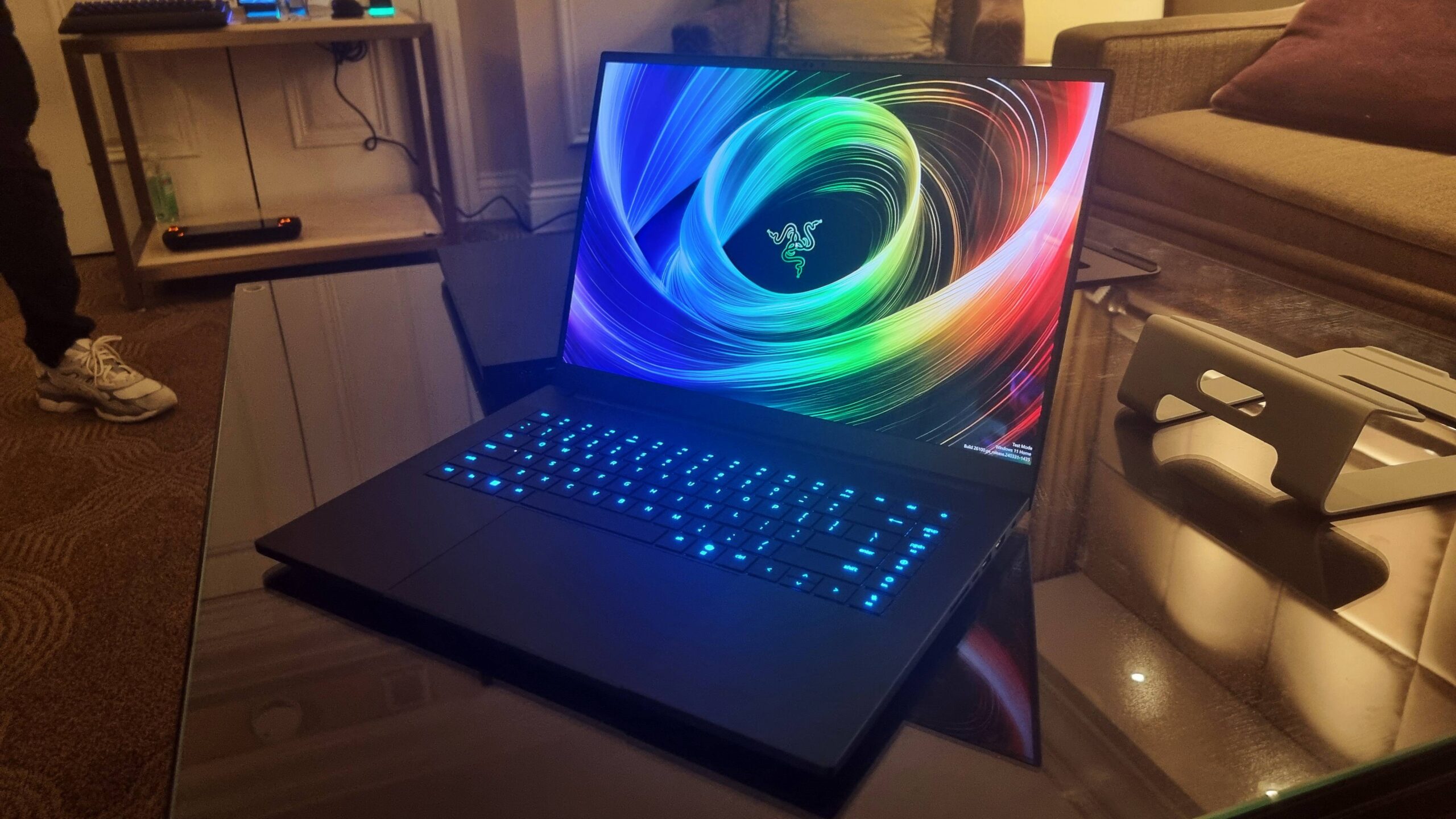We’re entering a new era of gaming laptops, folks—and last year, it was Asus leading the charge. The ROG Zephyrus G16 scorched its way to the top of our best gaming laptop guide in 2024, thanks to its ultra-slim design, fabulous OLED screen, and excellent table manners.
However, I’ve just spent some time with the new Razer Blade 16 at CES 2025, and I couldn’t help but be impressed. Razer has long been known for making sleek, desirable gaming machines—but in recent years, we’ve found them to be a little on the chonky side compared to the competition.
However, the 2025 Blade 16 is anything but. It’s 30% smaller by volume than the previous Blade, and a fair bit slimmer overall too. That’s thanks to a small underside bump which allows room for airflow over hot components but doesn’t feel like a tacked-on addition to an otherwise svelte machine.
It’s integrated into the bottom of the deck which means that the laptop feels deceptively thin overall while still hopefully giving a hefty GPU enough room to breathe. The result looks a little clunky in photos, but in person, it’s much less noticeable.
Overall the Blade 16 is a trimmed down, crisp-edged, ultra-premium looking and feeling machine, and substantially better proportioned and sleeker than the previous model. I span one around in my hands, and thought hard about whether it passes the “desirability test.” Is it an object I want, something I’d lay down my own cash for? In short, yes. Very much so.
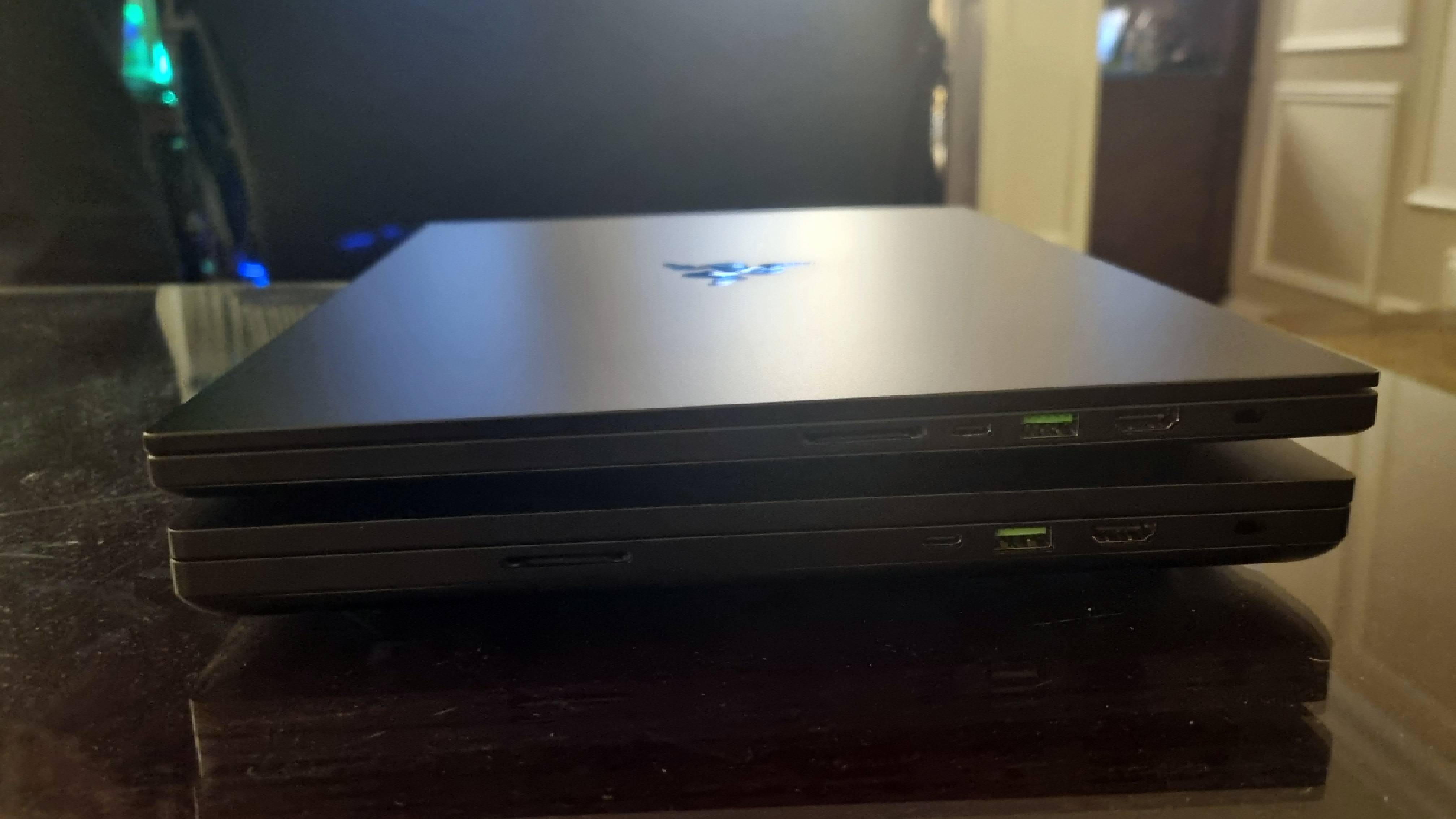
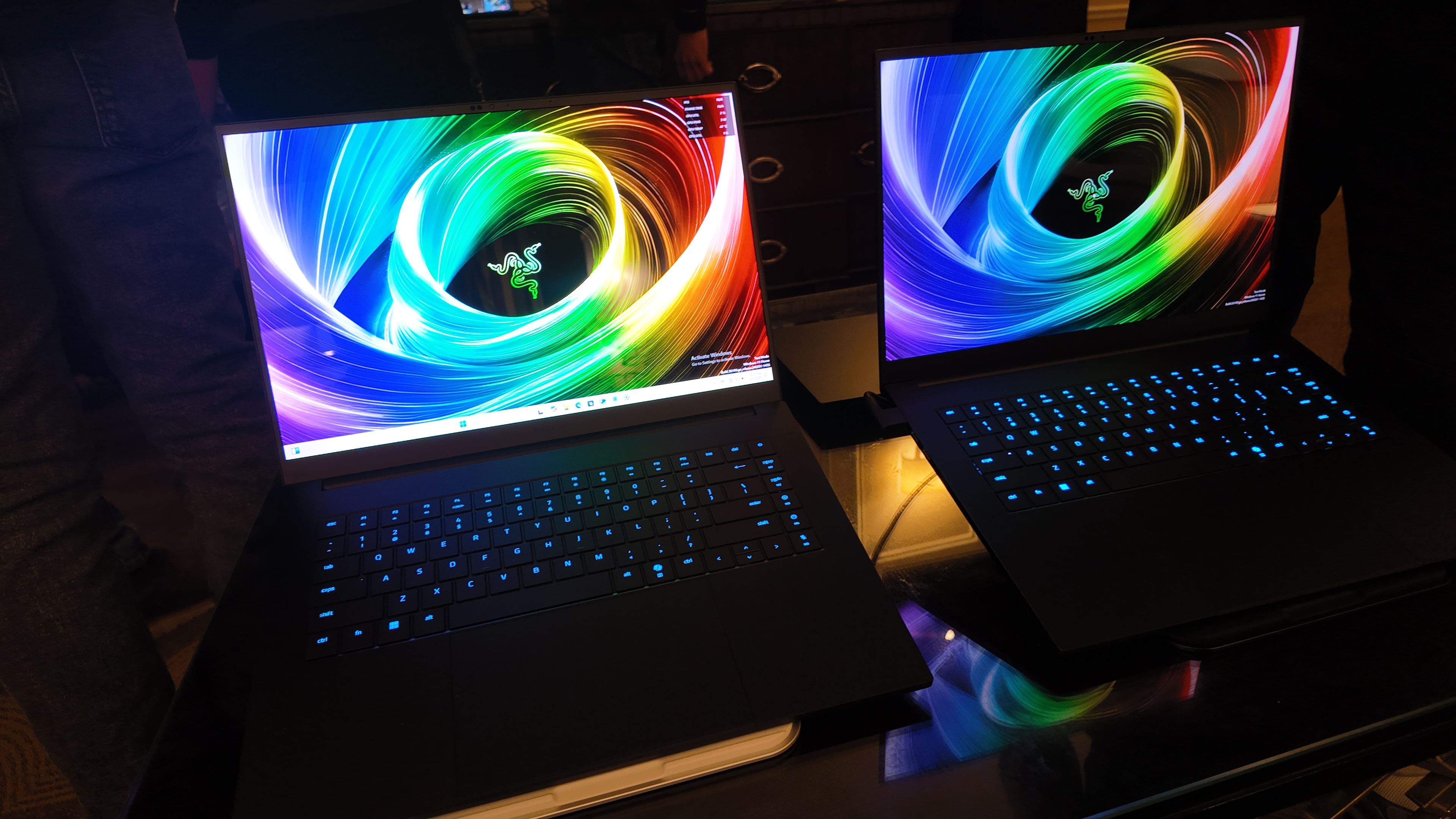
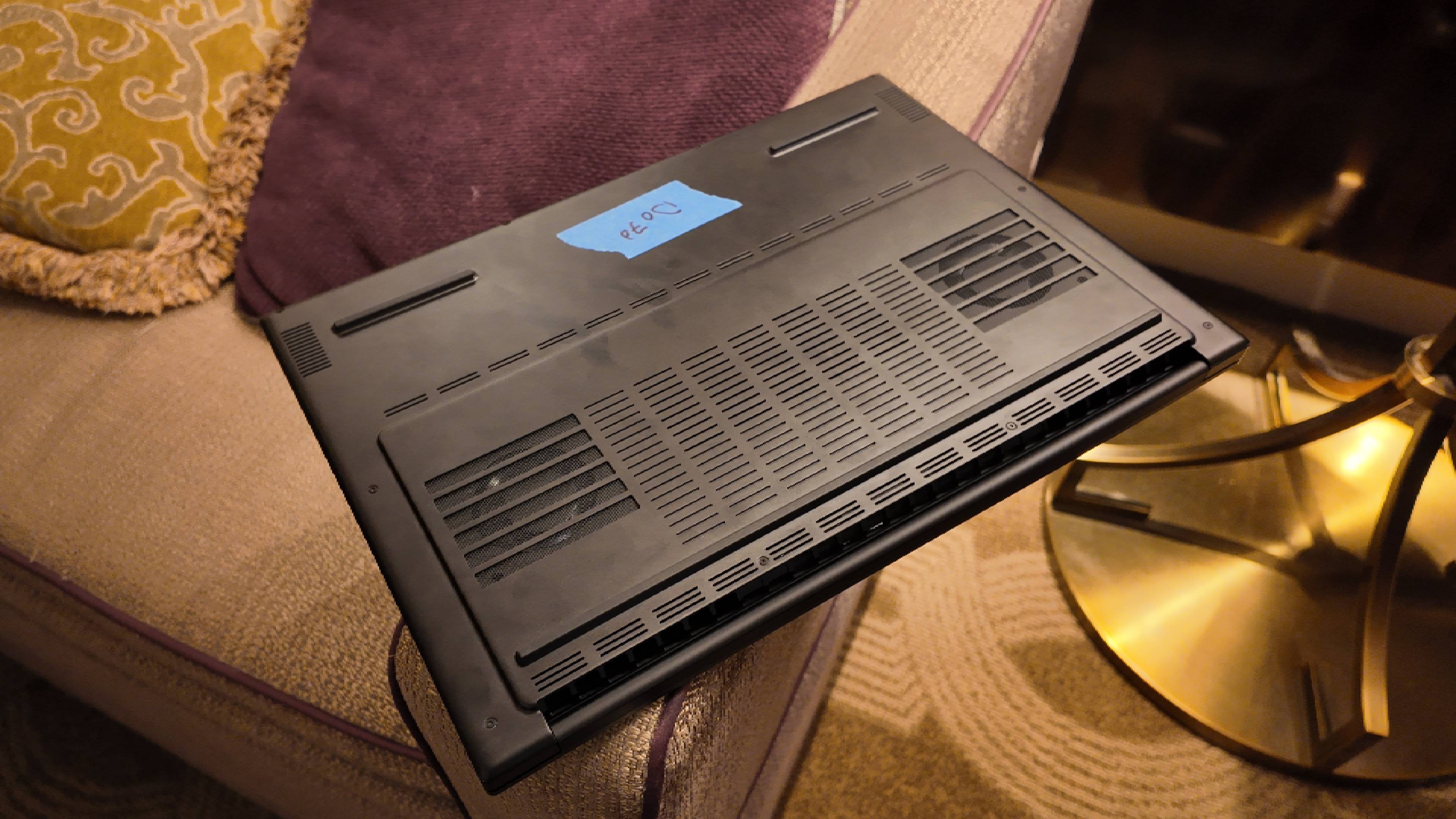
And that’s before we get to the hardware inside. In a move that must feel like one in the eye for Intel—given its pretty disastrous 2024—Razer has decided to equip the Blade lineup with AMD’s Strix Point mobile CPUs, with the top model featuring the Ryzen AI 9 HX 370. That’s a 12-core 24-thread monster, and thanks to the Radeon 890M iGPU onboard, the top Blade should be capable of some decent gaming performance away from the wall socket, too.
GPUs? Well, “next-gen Nvidia” models are all I’ve been told, so that’s pretty exciting in and of itself. Which GPUs in particular is still unknown, but combined with those speedy AMD chips and a decent dose of DDR5, I’m expecting great things from the performance if it can keep those components cool.
Speaking of which, the Blade makes use of a new thermal interface gel, ultra-thin .05 mm exhaust fans, and an improved thermal surface area coverage of 57% compared to the previous model. Razer hopes all this tech will make this machine just as cool to handle as it looks, although cool is a relative term when it comes to gaming laptops.
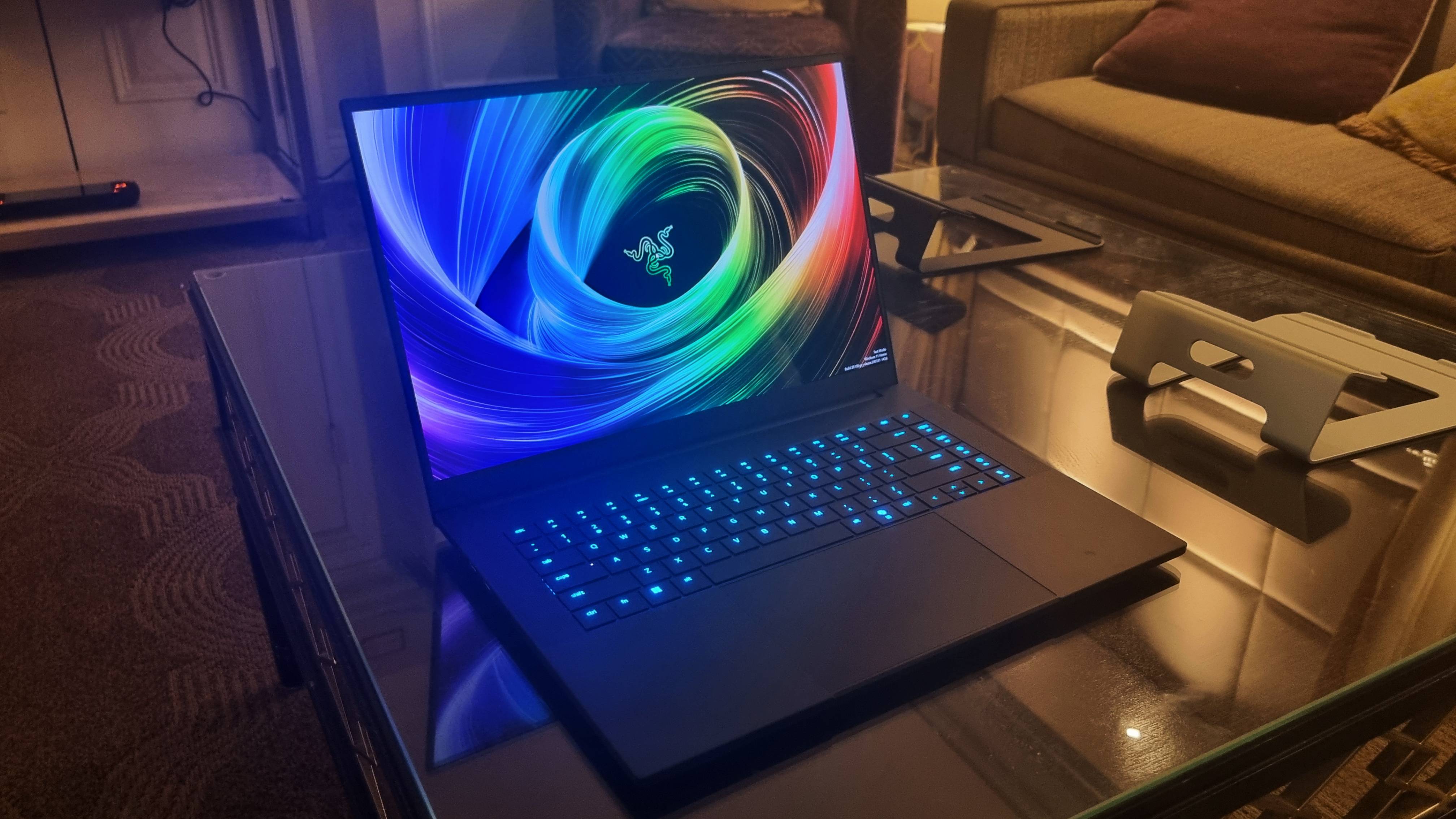
Not a shrieking, throttling, roaring mess is really the goal here, something that the G16 manages to pull off rather well. For what it’s worth, I never got a chance to hear the Blade 16 pushed to its maximum in my short time with the new machines, so the jury’s still out there.
Regardless, when it comes to sound it seems the Razer may be well-equipped to make itself heard over those fans—even if they do turn out to be a little loud. It features an upgraded six speaker design with upward and downward firing units, delivering what Razer says is “booming audio”. I didn’t get a chance to hear them in person, but I’d wager that “booming” is perhaps a little hyperbolic.
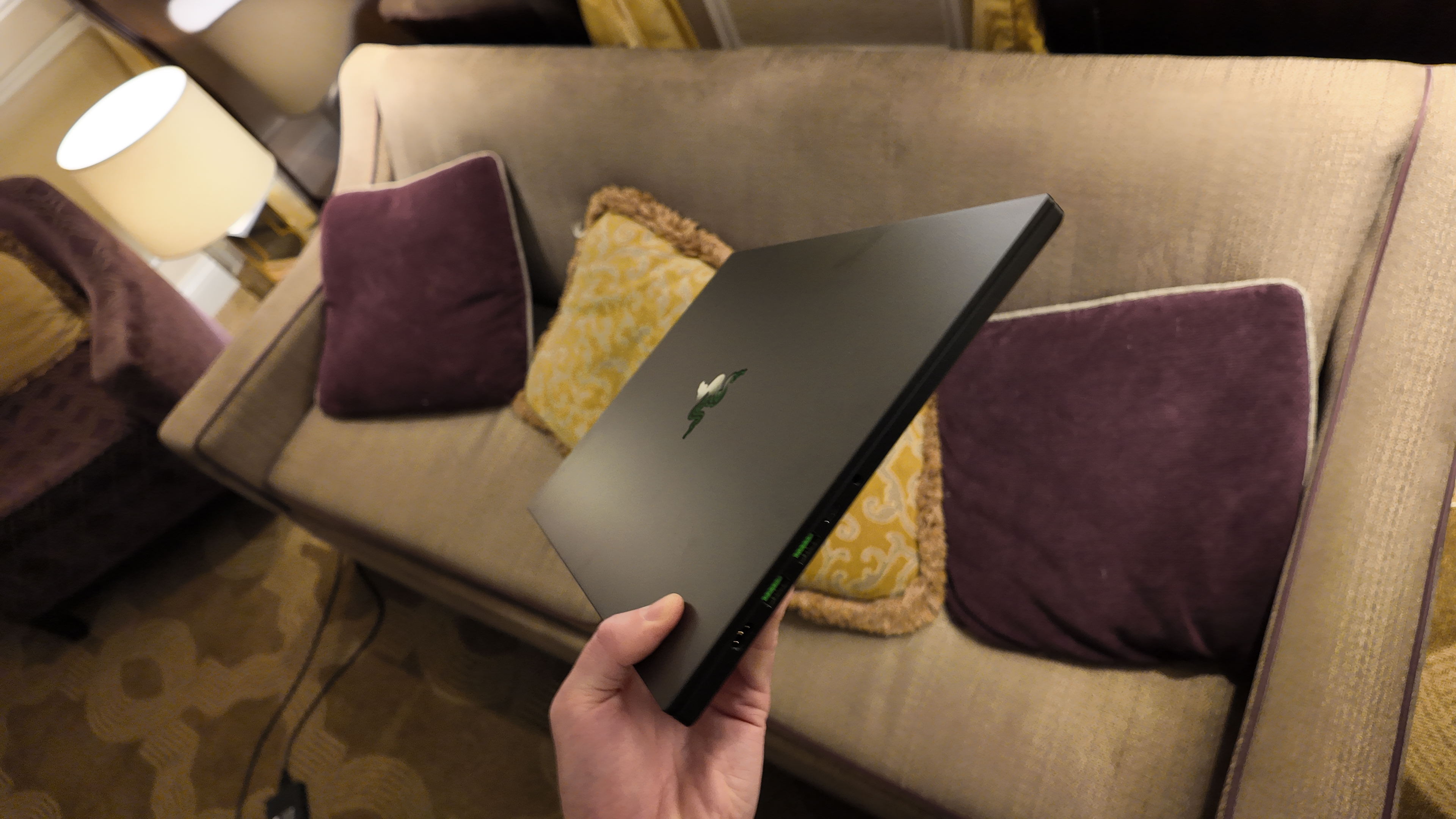
Still, most laptop speakers are awful, so anything with a bit more bass and mid-range than the mean would be appreciated.
Given I’m typing this article on a Razer Blade 15 Advanced (which is currently surrounded by fast food containers in my Vegas hotel room, glamourous soul that I am), one of my biggest takeaways from the new Blade 16 is that the keyboard’s better than any previous Razer laptop keeb I’ve used. Much, much better, in fact. That’s thanks to a 1.5 mm key travel, 50% more than the previous model.
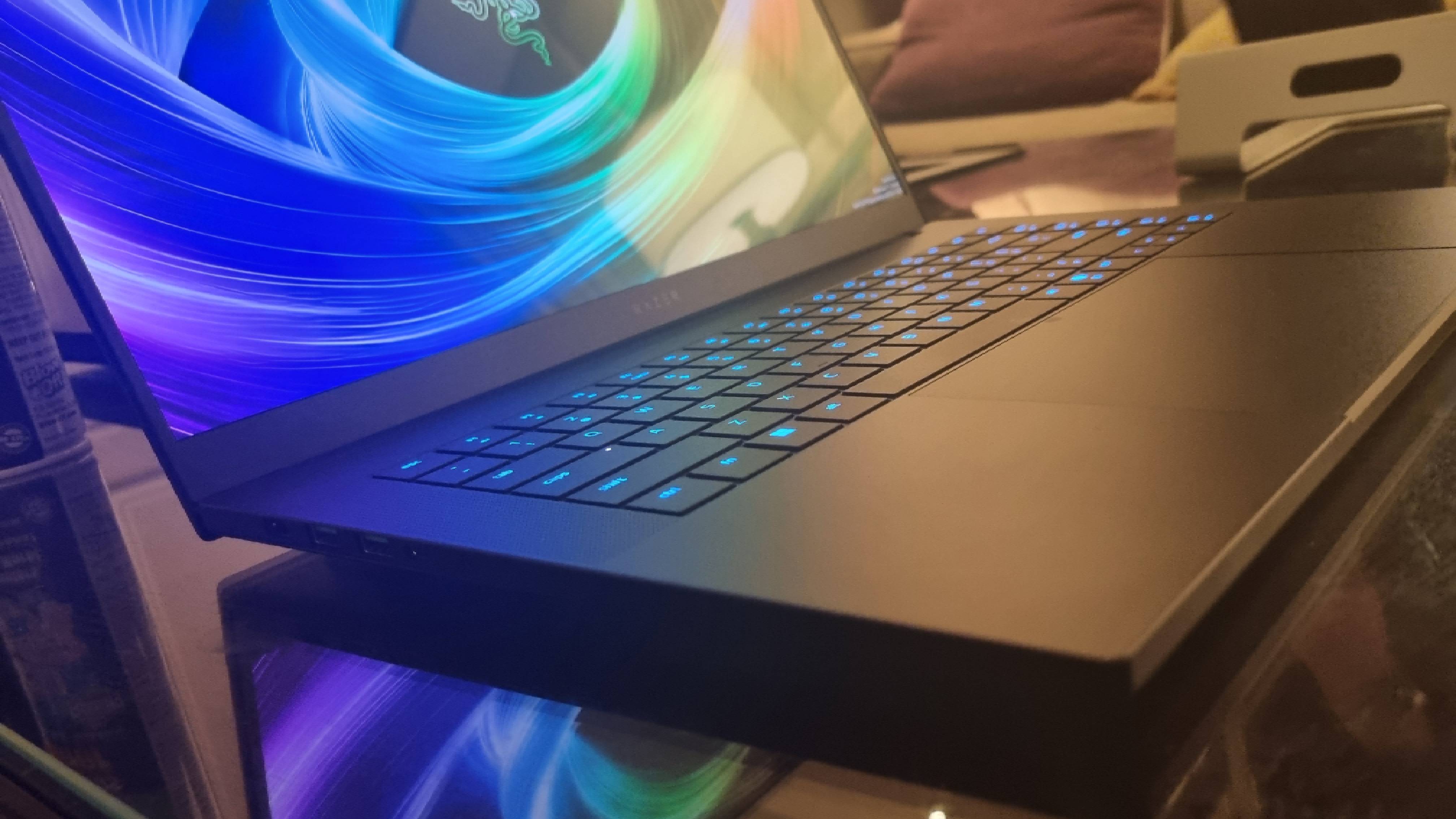
I’d have to give it a few days worth of type testing to really see if it can cut the mustard, but it felt clicky, positive and satisfying in all the right ways. Could this be the best laptop keyboard of the new crop of machines? We’ll have to wait and see, but I’d be surprised if it wasn’t a competitor, at least.
The screen is the same 240 Hz OLED panel as the outgoing model. Good. That was a stunner of a display, and it still looks just as good in person as it did the day it was released.
And then we come to pricing. Razer still hasn’t told us what the new Blades will cost, but I was told that they would be “aggressively priced.” That’s probably in reaction the the G16 often cropping up for surprisingly little money for such a premium-feeling machine, although I have to say I’ll believe it when I see it.

Catch up with CES 2025: We’re on the ground in sunny Las Vegas covering all the latest announcements from some of the biggest names in tech, including Nvidia, AMD, Intel, Asus, Razer, MSI and more.
Razer laptops have always carried a price premium, and as good as they often are, it’s usually a drawback. What does “aggressively priced” mean then, in Razer terms? We’ll have to wait to find out.
Still, I came away thinking to myself that, based on these brief impressions at least, if I was in the market for a high-end gaming laptop right now, the Razer would have shot to the top of my list. It seems thoughtful, well-judged, and ready for action—Razer’s chance to swing for the fences with the new crop of mobile gaming machines.
We’ll be testing one for ourselves when they become available (Q1 2025 is all I’m told for now), but if it can keep relatively cool and calm while delivering the numbers we expect, I think the new Blade 16 might just be the G16 competition we were waiting for. A big if, for sure, but first impressions were very good indeed.







